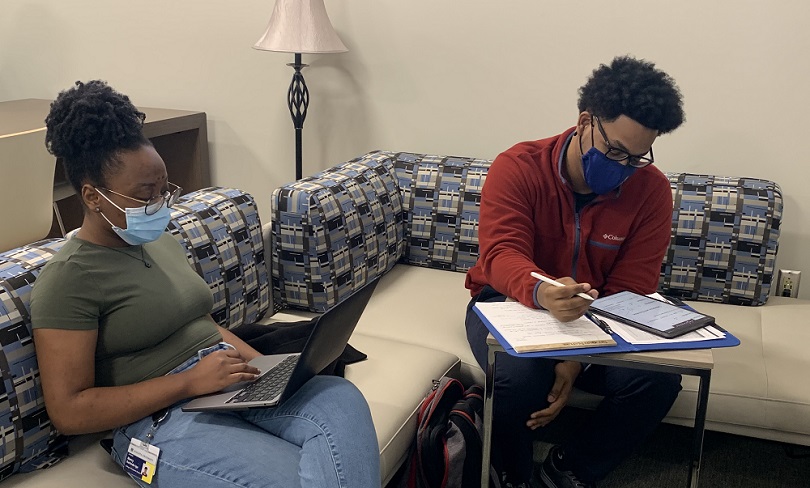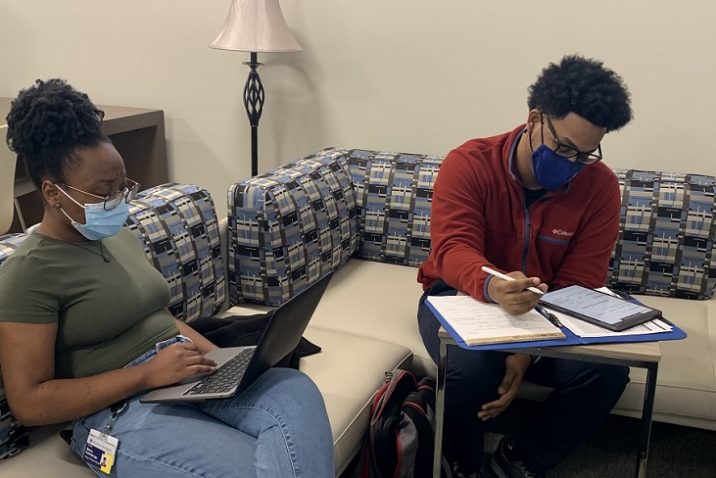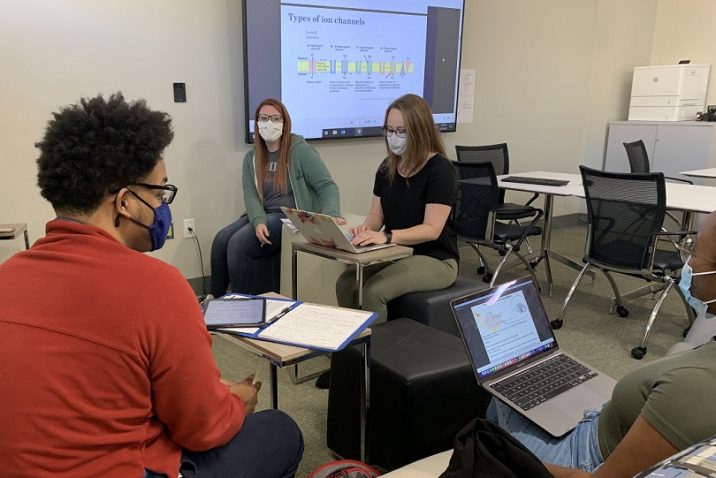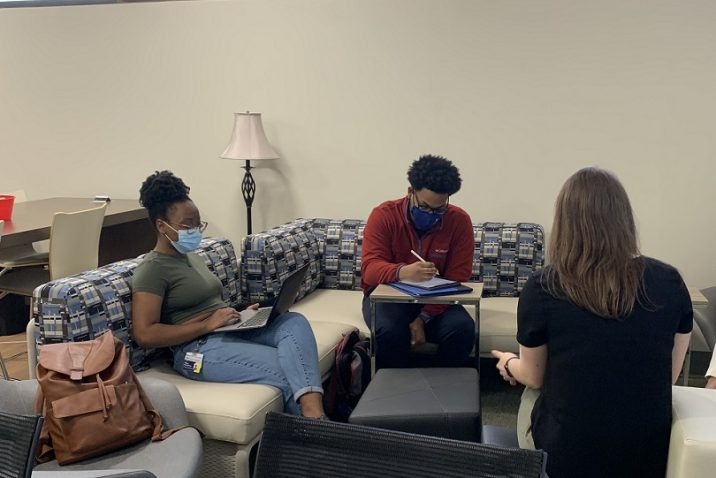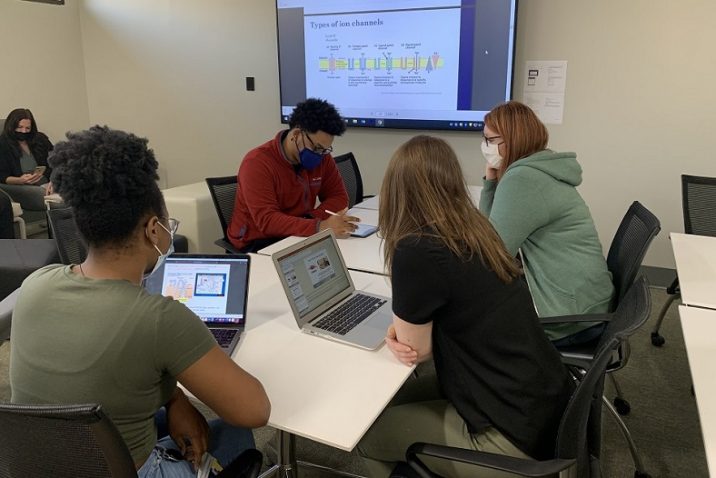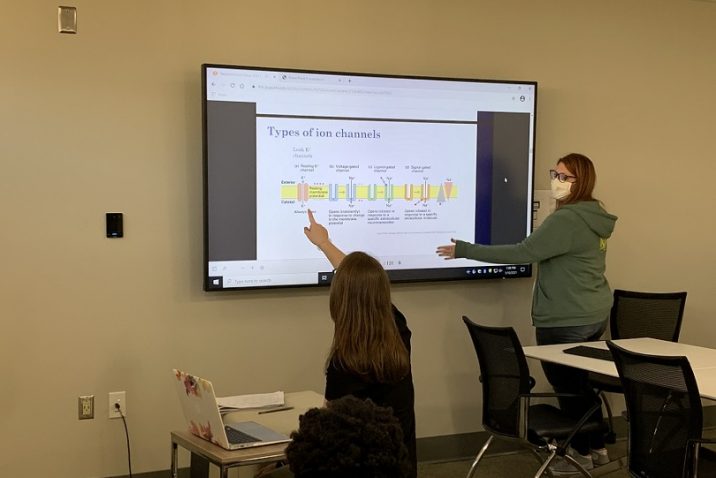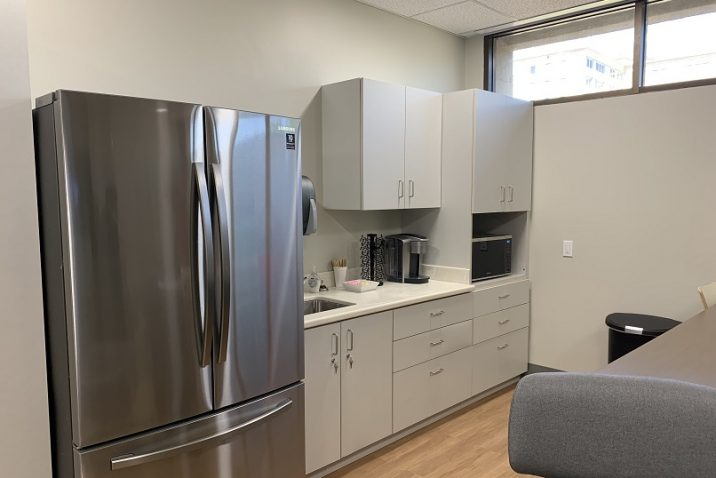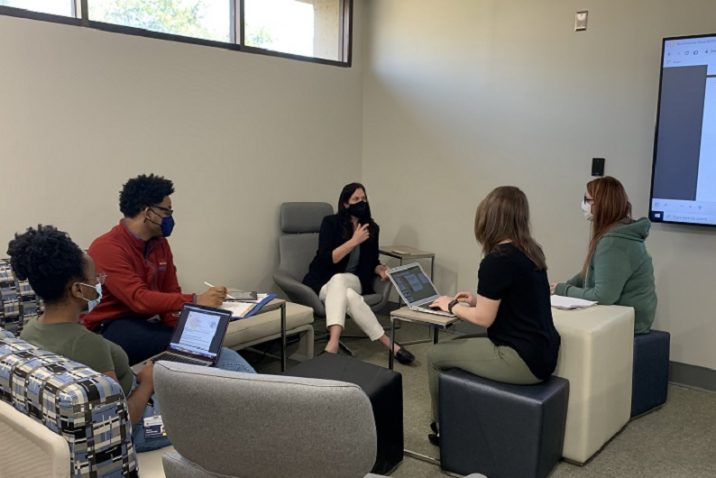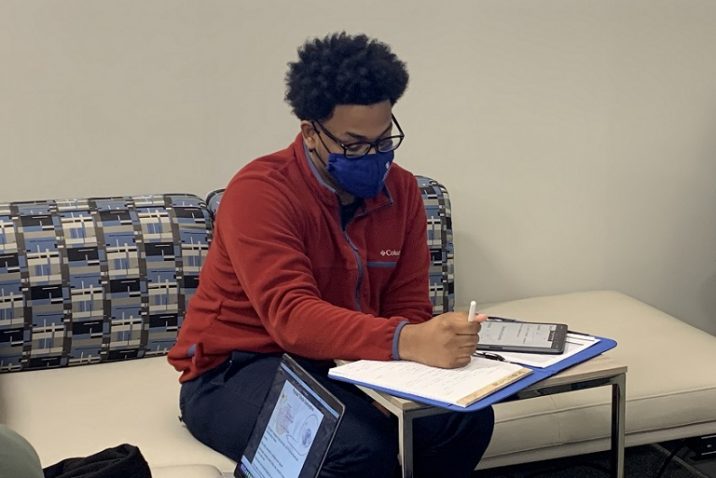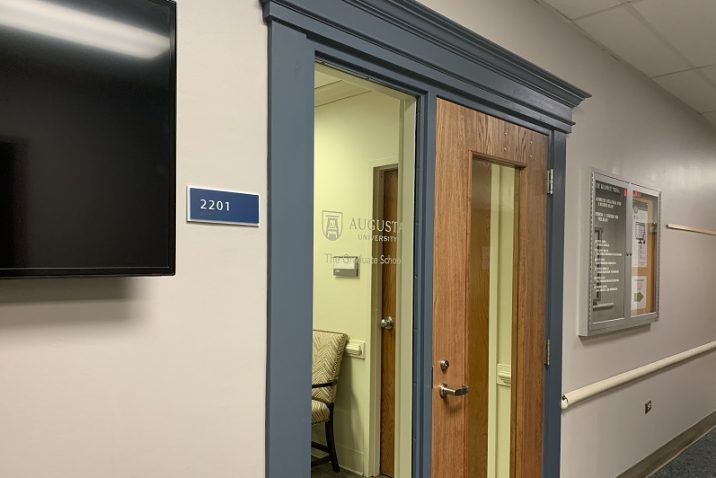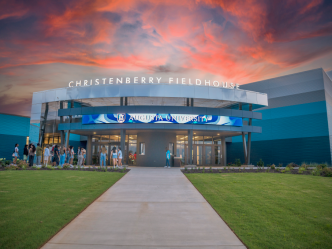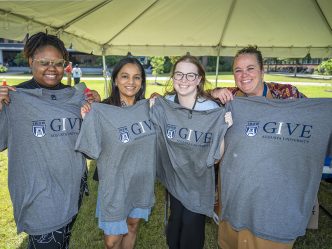A former classroom for CPR instruction has been given new life.
After a two-year search for space, a 552-square-foot room on the second floor of Pavilion III was allocated to The Graduate School and has been transformed into a lounge and study room for doctoral candidates in biomedical sciences.
“We all need a space to celebrate with each other, to commiserate, to bounce ideas off each other. It’s part of The Graduate School experience,” said Dr. Mitchell Watsky, former dean of The Graduate School. “But for this particular group, a common area to gather was lacking.”
A small closet had been converted and used for a short time, but it was inadequate, so Dr. Watsky teamed up with biomedical student representatives to petition university leaders for a larger, more functional space.
“Working through the Provost’s Office and the Facilities Space Committee, we were able to locate a spot, fortuitously, directly across from The Graduate School offices,” Watsky said.
“They gave us space in the CJ Building (Pavilion III). We went and checked it out, and it seemed like it might be perfect for us,” said Chandler Goldman, former president of the Biomedical Student Association and a student leader on the project. “I really thought students could benefit from something like this. Then we met with other grad students to see what their needs were and how we could create that in the space.”
Goldman said the students desired for their lounge to have the following amenities:
- A refrigerator and a microwave, so they could store and heat food and snacks.
- Furniture that could be easily moved and arranged for various purposes.
- Desk/study space for groups or individuals.
- A large monitor for practicing presentations.
“Once the space was secured, Planning, Design and Construction came in and showed us furniture options, and made it really easy for us,” said Kasey Belanger, a fourth-year graduate student who helped with the project. “I came here while Chandler was helping look for the space. At that time he was president of the BSA. And later I became the president and continued with the project.”
After a series of planning meetings, construction began in May 2020 and the room opened in September.
Goldman moved on to a post-doctoral fellowship at the University of Georgia, having defended his thesis in July 2020. However, he still kept up with the project.
“We would Facetime with him so he could see everything as it was progressing,” said Belanger.
“I saw pictures of the final outcome, and I was very pleased,” said Goldman.
“To step into this room and see it go from blueprint to real life is very eye-opening and exciting,” Belanger said.
“It’s a place with all the resources to help a grad student: desks and study space for equipment, really comfortable chairs and a small kitchen area. You can put a group of 10 together or roll the tables apart and have three small groups,” said Goldman. “I am just happy it finally came through. Everybody is just so happy about it.”
This includes interim dean Dr. Jennifer Sullivan.
“It is exciting and rewarding for me,” said Sullivan, “because it allows me the opportunity to maintain relationships with the students. Our office is just across the hall, so there is always a group of students to check in on and ask, ‘How are things going? Are rotations going well? Are classes going well?’ or ‘Do you need anything?’ I’m very happy with it,” she said.
Biomedical scientists study ways they can apply knowledge from different fields in biology and emerging fields in the medical sciences to improve the diagnosis and treatment of diseases.
The Graduate School brings in about 20-25 new Biomedical Sciences PhD students each year, and the dean’s office works closely with that group of students before they pick their PhD mentor in one of nine programs, which include Biochemistry & Cancer Biology, Cellular Biology & Anatomy, Genomic Medicine, Molecular Medicine, Oral Biology and Maxillofacial Pathology, Neuroscience, Pharmacology, Physiology and Vascular Biology.
“This space is for the entire cohort of biomed PhD students, which is usually around 100 or so,” said Watsky. “It can be difficult to foster a PhD student culture with this particular group because of their disbursement. This new space provides students a common area to get together, a space of their own to become a really cohesive group. Otherwise it would just be sporadic.”
This cohesiveness can be important as it builds community among the students.
“I met so many of my friends when I began my PhD program,” said Goldman. “But, once you get into your lab, it becomes harder to meet others, to see that you are not the only one struggling to get through school. You can always go study in the library, but the nature of the library is to be quiet, so you can’t really relax and just hang out with each other,” he said.
“First-year students haven’t selected where they will do their PhD work, so they spend time looking and trying out different programs,” said Sullivan. “It’s not until the end of that first year that they actually commit to a program, a mentor and have a laboratory and space to work. Until then, they need a place to connect with others. Now we have this fantastic lounge and study space where they can do that.”
“It’s way beyond what we thought or expected,” said Belanger.
 Augusta University
Augusta University
